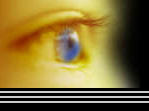|
|
 |
|
Effects of Spouse Abuse on the Victim:
ABUSE, in general:
*involves serious physical and emotional damage
*(Spousal abuse) Both verbal and physical "depresses marital satisfaction and inhibits intimacy".
*Isolation (limiting their access to safety and support)
*Higher rates (compared to those who are not abused) of Anxiety and Depression
-2 in 1,000 non-abused women have suicidal thoughts in one year; 46 out of 1,000 for abused women.
*Rejection Sensitivity
*Anger
*Difficulty with Trust
*Lives in constant fear the batterer will become more violent/fatal if she leaves
*Mixed emotions as memories of good times, love, and hope clash with the manipulation, intimidation, and fear.
*The women's reaction to abuse may be used to cause more beatings.
But not only the victim suffers! Children who witness violence are the "silent, forgotten, and unintended"
victims of spousal abuse.
If the abuse occurs in a family where children are present it is possible the CHILD will suffer:
*Increased risk of becoming victims
*Increased risk of being a perpetrator of violence themselves
*Increased risk of hindered behavioral and emotional development
*Increased risk of alcohol/drug abuse
*Low self-esteem
*Health problems
*Increased risk of aggression and non-compliance with peers and adults, destructive behavior and conflict with the law.
*If children witness DOMESTIC VIOLENCE, it is very likely that they will also witness a considerable amount of psychological
abuse such as VERBAL ABUSE, belittling, and threats.
|
 |
|
HOW TO COPE WITH ABUSE
1. Take responsibility and disengage from the problem. Decide for yourself that you will no longer play the "victim
game".
2. Affirm your own and your family's worth. Decide for yourself that your life deserves a change.
3. Balance self-concern with other-concern. Try to find a balance without neglecting any of the important people in
your life.
4. Learn the art of Reframing (redefining the meaning of something).
5. Find and use available resources
HOW TO FIX ABUSE
Since 1964, more than 1800 shelters or refuges for battered women have been established in the United States. There,
victims of abuse receive legal assistance, counseling for themselves and their children, and additional treatments including
substance abuse rehibilitation.
It has proved increasingly common, as well, for offenders of spousal abuse to attend treatment programs. Most of
these programs are 6-32 weeks long and involve group therapy with a feminist perspective on domestic violence. During these
therapy sessions, anger management is emphasized. Counselors teach participants to recognize cues of anger and use techniques
to control the emotion instead of lashing out in violent behavior.
In 1994 Congress passed the Violence Against Women Act, authorizing $800 million in federal funds for state and local
programs to combat domestic violence. The passing of this law implicates that it is now a federal crime for a person with
a restraining order to travel to another state in order to violate that restraining order, and also prohibits the individual
from possessing firearms. Despite its title, this law is focused on applying its restrictions on both male and female offenders.
|
 |
|
|
 |
|
|
 |
|
|
|
|
|
|
 |

